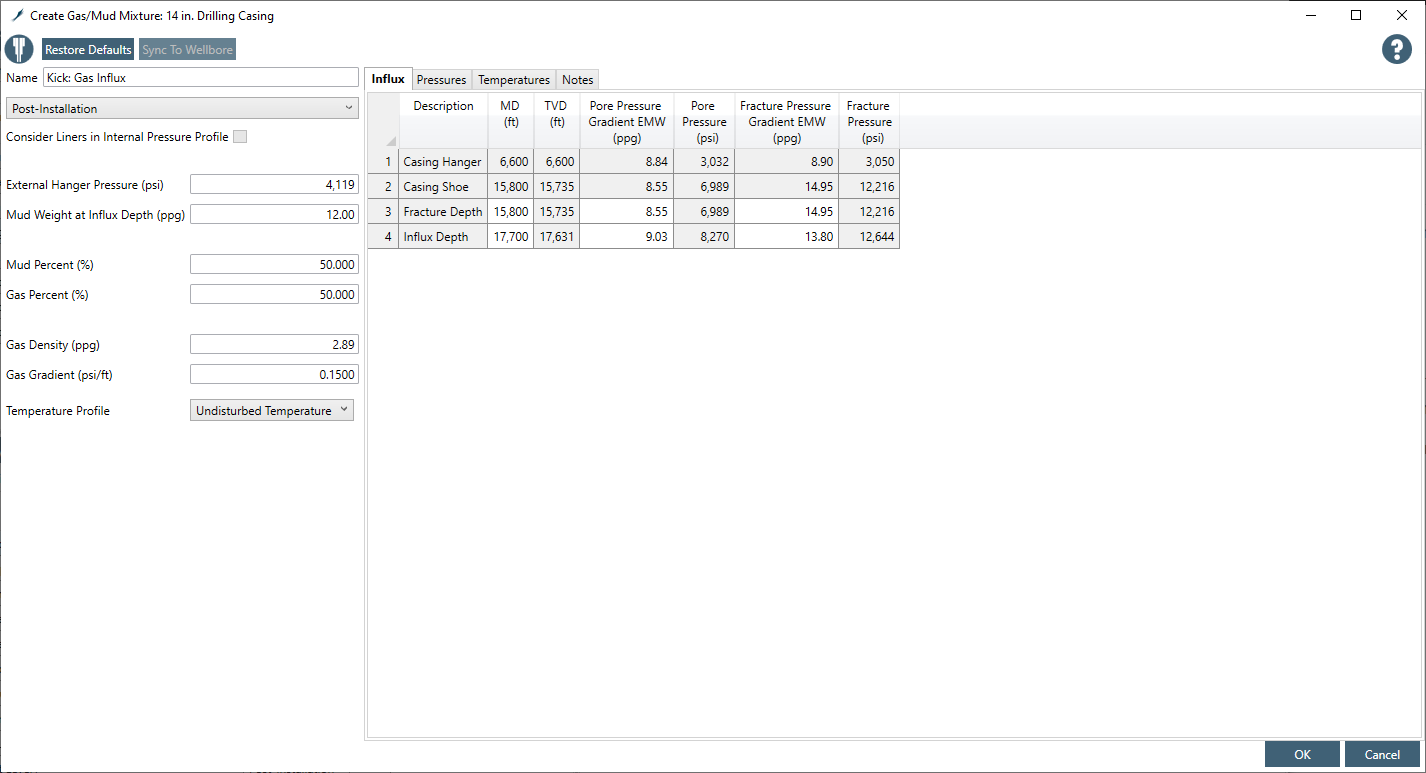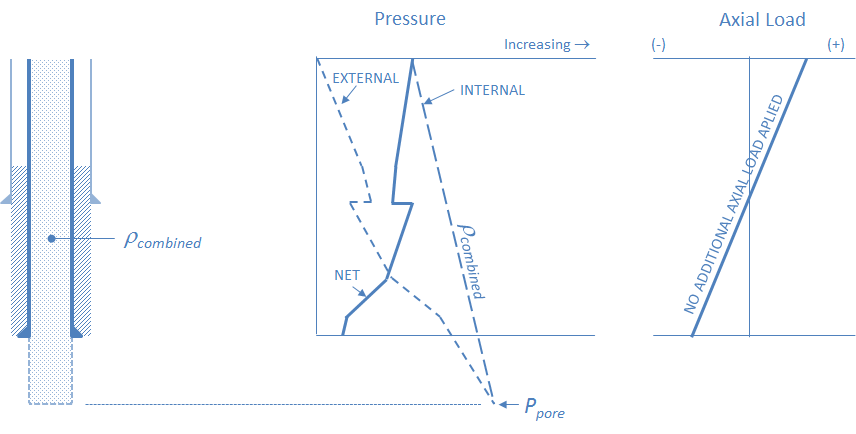¶ Kick: Gas Influx
The Kick: Gas Influx load case is defined as a scenario where the internal pressure is governed by an influx of wellbore fluid into the wellbore. The influx is assumed to be gas and defined as the ratio of gas and mud in the wellbore applied uniformly throughout the wellbore as demonstrated by the following equation:

If the influx, as defined, produces a wellbore pressure at the casing shoe that exceeds the fracture pressure, then the fracture pressure is assumed at the shoe. The internal pressure at any depth is calculated by subtracting the hydrostatic pressure exerted by the combined density in the wellbore from the internal pressure at the casing shoe, which ever pressure controls.
If the Gas Percentage is edited to 100 %, the load case effectively becomes a Kick: Casing Full of Gas load case using the Lowest option for the Internal Pressure Profile.
This load case is usually defined as a Post-Installation Load Case.

¶ Inputs
This load case utilizes the Undisturbed Temperature Profile.
The inputs include:
- Description
- Pressure at Hanger
- Mud weight at Influx Depth
- Mud Percentage
- Gas Percentage
- Gas Density
- Gas Gradient
The Description is nothing more than the load's name, which can be edited by the well designer.
The Pressure at Hanger is the hydrostatic pressure of the annulus fluid at the wellhead. The default value is the pressure resulting from the mud density in which the string was run. While this field can be edited, it will rarely need to be.
The Mud Weight at Influx Depth is the density of the mud in the wellbore at the time the influx enters the wellbore. The assumption is that the mud density is constant over the entire length of the wellbore. The default for this value is the fluid density specified in the Casing Program Table.
The Mud Percent and Gas Percent fields are tied together. Editing one, automatically changes the other so that their total remains 100 %. The default value is 70 % gas.
The Gas Density and Gas Gradient fields are also tied together. Changing one will automatically update the other. The default value for Gas Density is 2.50 ppg or 0.13 psi/ft.
External Pressure Options include:
- Original Mud Weight
- Base Fluid Density
- Sea Water
- Fresh Water
- Cement Mix Fluid Density
- Cement Slurry Density
- Pore Pressure Gradient
- Fracture Pressure Gradient
- Custom
The Original Mud Weight, Base Fluid Density, Sea Water Gradient, Fresh Water Gradient, Cement Mix Fluid Density and Cement Slurry Density, all have default values assigned to them. Values shown for the Original Mud Weight and Cement Slurry Density, which are specific to the string under consideration, were input by the well designer in the Casing Program Table. The other default values are assigned by StrinGnosis® and cannot be edited. All are constants, except for Base Fluid Density which is either 8.33ppg or 7.00ppg EMW, depending on whether water or oil based mud is specified.
Any of the available fluid choices may be assigned to any region of the wellbore annulus. StrinGnosis® will select the annulus fluids for the default condition based on a set of rules defined in the External Pressure Assumptions Section. The StrinGnosis® default for all Collapse load cases is the hydrostatic pressure of the mud that the casing was run in. These rules have been carefully considered to provide a reasonably conservative estimate of the annular conditions for the load under consideration. A thorough understanding of these assumptions is advised before manually altering the default fluid selections.
¶ Load Case Example
